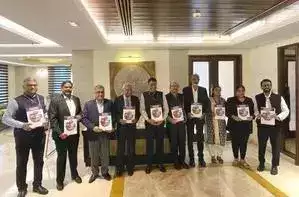 Diesel demand will see significant growth, stabilizing at 411 million tonnes of oil equivalent (Mtoe) by 2070 unless measures are implemented.
Diesel demand will see significant growth, stabilizing at 411 million tonnes of oil equivalent (Mtoe) by 2070 unless measures are implemented.Greenhouse gas (GHG) emissions from India’s transport sector are projected to increase sixfold from 391 million tonnes of CO₂ equivalent in 2020 to 2,416 million tonnes by 2070, according to a report by The Energy and Resources Institute (TERI). The "Roadmap for India’s Energy Transition in the Transport Sector" highlights the urgent need for policy interventions to curb emissions and achieve net-zero targets.
The report notes that transport energy demand is expected to grow from 5.21 exajoules (EJ) in 2020 to 34.39 EJ by 2070 under a baseline scenario, driven by rising passenger and freight activity. Diesel demand will see significant growth, stabilizing at 411 million tonnes of oil equivalent (Mtoe) by 2070 unless measures are implemented.
Decarbonisation scenarios highlight pathwaysTERI proposes three decarbonization scenarios—Policy-in-Action (PIA), Ambitious, and Highly Ambitious—that illustrate varying levels of GHG reductions. Under the Highly Ambitious scenario, emissions could be cut by up to 77% by 2070. This would require large-scale adoption of electrification, biofuels, and hydrogen in transport systems.
"The transport sector’s decarbonization is key to aligning India’s net-zero commitments with its energy goals," said Dr. Rahul Chakraborty, the report’s lead author. "Electrification, rail freight expansion, and renewable energy integration are critical elements."
Policy recommendationsKey recommendations include expanding rail freight's share from 26% to 45% by 2040, which could reduce transport emissions by 22%. The report also emphasizes the need to scale up electric vehicle (EV) adoption, which may require up to 23.5 TWh of battery energy by 2070. Hydrogen is identified as a crucial alternative for medium and heavy goods vehicles.
Call for coordinated actionThe report urges greater investments in public transport systems and infrastructure development, along with strong government and private sector collaboration to enable sustainable mobility.
